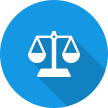Getting arrested for drug possession is a heart-stopping situation. A conviction could mean heavy fines or time behind bars.
Courts measure the seriousness of drug offenses on several criteria. One is how many times you have been in trouble with the law. Another factor is the weight of drugs in your possession. Finally, the type of drug you are holding determines punishment severity.
Tiers of illegal drugs
Schedule I drugs earn the harshest penalties. Cocaine, heroin, marijuana, and ecstasy are prime examples.
The next level of seriousness is Schedule II, which consists of opiates such as morphine. These drugs must have approval from a doctor to be legal.
Schedule III drugs include codeine and non-narcotics like ketamine. They also need prescriptions. Schedule IV drugs are rarely abused, earning them some of the lightest sentences.
The law is least concerned about Schedule V drugs, such as cough syrup. Even still, prison time is a possibility.
Tiers of illegal drug convictions
The most common types of drug charges are paraphernalia and possession. Holding drugs will net you a possession charge. Items intended for taking or manufacturing drugs earn paraphernalia indictments.
More significant are distribution, trafficking, and manufacturing charges. These only happen when the amount of drugs in question reaches a certain threshold. Consult a legal professional and find out where your case falls.
Those facing drug charges need to know the legal consequences of different allegations. This knowledge helps when formulating an argument that the accused deserves lesser punishment. Allow a criminal defense specialist to build an effective case on your behalf.




